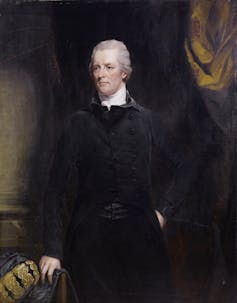
Having made a pre-election pledge to do so, the government is moving forward with the House of Lords (hereditary peers) bill, a piece of legislation that will remove the remaining hereditary peers from the House of Lords.
The bill is almost certain to pass through parliament, ending a centuries-old tradition of hereditary membership in the House of Lords. But who are these hereditary peers, and how did they come to sit in parliament in the first place? Some of the answers may be surprising.
The House of Lords has ancient roots – though it has changed very fundamentally over the years. The original precursor of the English (and subsequently UK) parliament was a single-chamber body, bringing together the powerful in the land to advise the monarch. It is difficult to put a date on when this began but it included representatives of the nobility and the church.
Initially, there was no presumption that those invited to participate in one session of parliament would be invited to the next, but gradually arrangements became more fixed. The “temporal” (as opposed to “spiritual”) members of parliament became the holders of hereditary titles, which would be passed down through their family line. Over time, the members of what became the House of Commons split off, with the two chambers regularly sitting separately from the 14th century.

Some modern preoccupations about the House of Lords can be traced back centuries. By the time of Charles I, there were already concerns that too many new peerages were being created and that the chamber was growing too large. There was even talk of money changing hands in some cases. As early as 1719, a bill was proposed to cap the size of the House of Lords, and allow new peerage creations only when existing lines died out. That bill was, however, unsuccessful.
By the late 18th century, the monarch was following prime ministerial advice in creating peerages. William Pitt the Younger became a prolific distributor of titles, increasing the number of Lords temporal from 212 to 314. In the mid-19th century, the House of Lords stood at around 450 members, and by the early 20th century, it exceeded 600 members. Immediately before it was reformed by Tony Blair’s government in 1999, its size was double that.
The reforms begin
In the late 19th century, under prime ministers William Gladstone and Lord Salisbury, there were deliberate moves to broaden the peerage and move it away from landed interests. Titles were awarded to industrialists, former diplomats, military personnel and civil servants. Notable appointees in this period included the artist Frederic Leighton, the surgeon Joseph Lister, and the former House of Commons clerk Thomas Erskine May. This helped to boost the “crossbenches” in the Lords, and build the chamber’s reputation for expertise.
Nonetheless, in another pattern familiar today, around two-thirds of those appointed were former MPs. Prominent among them were those who had held high office – routinely including former prime ministers and speakers of the House of Commons.
The hereditary nature of titles created an obvious difficulty with size – that a seat created for a person did not die with them, but was passed to their (exclusively male) successors. Every peerage awarded (with a small exception for those with legal expertise under the Appellate Jurisdictions Act 1876) was a hereditary peerage, and large numbers continued to be created.
While some lines died out due to lack of male successors, pressure grew for the creation of life peerages rather than allowing members to pass their seat in the Lords on. The first bill to allow such appointments was introduced in 1849, but it was not until the Life Peerages Act 1958 that change finally occurred.
By 1957, the year before the act, half of members (who by now exceeded 800) owed their hereditary peerages to 20th-century creations. Among them were the descendants of Asquith, Lloyd George, Stanley Baldwin and Field Marshal Montgomery. Even Labour’s Clement Attlee (who, upon assuming office in 1945, faced a House of Lords containing just 16 Labour members) was given a hereditary peerage in 1955. His grandson still serves in the House of Lords.
Want more politics coverage from academic experts? Every week, we bring you informed analysis of developments in government and fact check the claims being made.
Sign up for our weekly politics newsletter, delivered every Friday.
After 1958, the creation of new hereditary peerages became much rarer. It was, notably, only at this point that women entered the chamber for the first time – and only in 1963 that women inheriting the few hereditary titles not travelling purely down the male line were allowed to take seats in the chamber. An interesting anomaly was Margaret Thatcher’s bestowal of a hereditary peerage on her former home secretary and de facto deputy prime minister, Willie Whitelaw, in 1983 – the first such awarded for 18 years. Having only daughters, Whitelaw did not pass his peerage on.
The reform implemented by the Blair government in 1999 was originally intended to sweep away all of the hereditary peers. But while over 650 departed, a deal between the parties allowed 92 to remain – with replacements when these peers died or retired largely filled by a bizarre system of byelections, where the only eligible candidates were hereditary peers.
These byelections were recently halted in expectation of the bill, leaving 88 hereditary peers currently serving in the chamber. All of them are men, 45 are Conservative (and only four Labour), while 43 (49%) hold peerages created only in the 20th century.
This group is anomalous, and long overdue reform. It is also less historic in certain respects than many might assume.
This article has been updated to correct the language around how many peers William Pitt the Younger added to the chamber.
Meg Russell has in the past received funding from the ESRC for her research on the House of Lords.
This article was originally published on The Conversation. Read the original article.







